For avid cyclists, every component of their bike plays a crucial role in optimizing performance and enjoyment on the road or trail. One often-overlooked accessory that can make a significant difference is the water bottle cage.
Specifically, carbon bottle cages, like those offered by Trifox, are gaining popularity for their blend of functionality and style. But can a carbon bottle cage truly enhance the cycling experience? Let’s explore the benefits and impact of this sleek accessory.
Carbon fiber has become the material of choice for many cycling components, and for good reason. Its lightweight nature is one of its most appealing attributes. When it comes to bottle cages, this means less weight for cyclists to carry, which can translate to improved speed and energy efficiency. Every gram counts in the world of competitive cycling, and a lighter bike means less effort is required during climbs and sprints. The Trifox carbon bottle cages weigh a fraction of traditional metal cages, offering a tangible performance advantage.
Durability is another key benefit of carbon bottle cages. Despite their light weight, carbon fiber structures are incredibly strong and resilient, capable of withstanding the rigors of intensive cycling. Whether you’re tackling rough mountain trails or enduring long road rides, a carbon cage ensures your water bottle stays securely in place. This robustness reduces the need for frequent replacements, making it a cost-effective choice in the long run.
From an aesthetic standpoint, carbon bottle cages offer a sleek and modern look that complements the high-tech appearance of today’s bicycles. The minimalist design and smooth finish add a touch of elegance, enhancing the overall visual appeal of your bike. This not only satisfies the eye but can also boost a cyclist’s confidence and pleasure in their ride, knowing they have a high-performance, stylish setup.
The convenience factor is another compelling reason to consider upgrading to a carbon bottle cage. These cages are designed for easy access and secure placement of water bottles, ensuring you stay hydrated without hassle. The security provided by a well-designed cage means you can focus on your ride without worrying about losing your hydration source on bumpy terrain.
Customer feedback on Trifox’s carbon bottle cages underscores their value and effectiveness. Many users have expressed satisfaction with the light weight and secure fit these cages provide, noting that they enhance the overall cycling experience. Such positive testimonials highlight the importance of investing in quality accessories. Even a seemingly small component like a bottle cage can have a significant impact on a cyclist’s performance and enjoyment.
Moreover, investing in high-quality cycling accessories like carbon bottle cages can instill a sense of pride and ownership in your cycling gear. This psychological boost can enhance your motivation and commitment to riding, whether for leisure, fitness, or competition. It also reflects a dedication to maintaining a well-equipped bicycle that can effortlessly tackle any challenge.
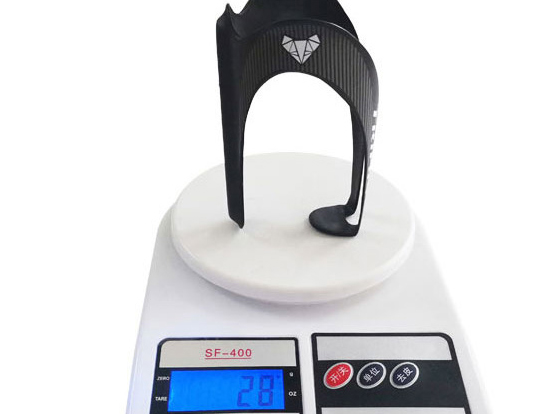
In conclusion, while a carbon bottle cage might seem like a minor upgrade, it can indeed be a key element in enhancing your cycling experience. By offering weight reduction, durability, aesthetic appeal, and convenience, these cages provide a comprehensive package that benefits every cyclist.
The positive experiences shared by users further emphasize their worth. For those looking to optimize their ride, a carbon bottle cage from Trifox could be a worthwhile investment, contributing to both performance and enjoyment on the bike.
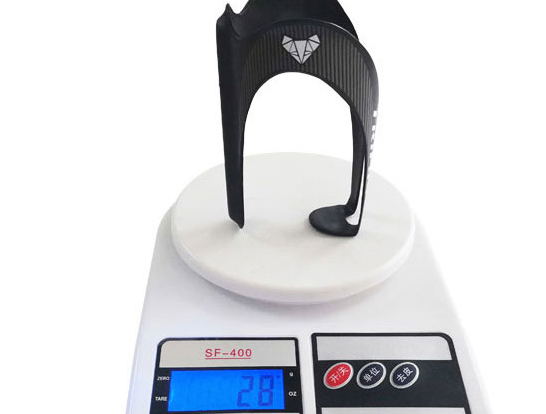
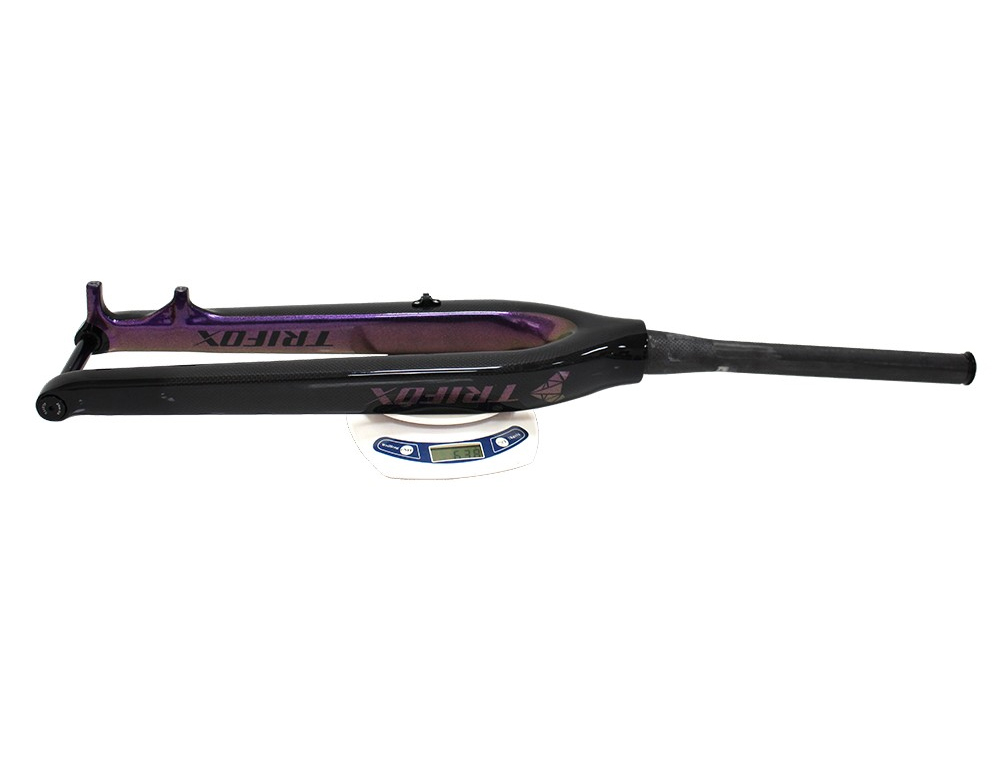
When it comes to enhancing your mountain biking experience, upgrading your bike's fork can be a game-changer. One such component that has been capturing attention is the 29er Rigid Carbon Fork, specifically the Trifox TMK100 model. But is this fork the ultimate upgrade for your mountain bike adventure? Let’s delve into its features, benefits, and what real users have to say about it.
The Trifox TMK100 carbon MTB fork is engineered for performance, featuring a T800 carbon fiber construction that offers a perfect blend of strength and lightness. At approximately 600 grams, this fork significantly reduces the front-end weight of your bike, making uphill climbs easier and improving handling. The carbon fiber not only keeps the weight down but also contributes to the fork's durability, ensuring it can withstand the rugged demands of off-road cycling.
One of the standout features of the TMK100 is its compatibility with disc brakes. This integration ensures reliable stopping power, which is crucial for navigating challenging terrains.
Whether you're descending a steep trail or maneuvering through tight corners, the disc brakes provide the confidence and control needed to tackle any adventure. Moreover, the fork's tapered design, ranging from 1-1/8 to 1-1/2 inches, enhances stability and steering accuracy, allowing for precise handling even in tricky situations.
The fork is specifically designed for 29-inch wheels, making it an excellent choice for modern mountain bikes. It accommodates up to 2.1-inch tires, giving you the flexibility to choose tires that match your riding style and terrain preferences. This feature is particularly beneficial for riders who enjoy exploring various trails, from smooth paths to rocky and uneven tracks.
Customers who have opted for the Trifox TMK100 have shared overwhelmingly positive reviews. Users like Mathieu appreciate the fork's light weight and robust design, noting that it enhances their biking experience without compromising on durability. Ahlvers echoes this sentiment, highlighting the fork's strong build and appealing aesthetics. James, another satisfied customer, mentions how the fork has exceeded expectations in terms of performance and quality. With a perfect 5-star rating from all reviewers, it's clear that the TMK100 has made a strong impression on the mountain biking community.
The benefits of using a rigid carbon fork extend beyond just weight reduction and durability. By eliminating the suspension, a rigid fork like the TMK100 provides a more direct connection to the trail. This can lead to improved pedaling efficiency and a better feel for the terrain, which many seasoned riders find preferable for specific types of biking, such as cross-country and gravel riding. The direct feedback from the trail allows for a more engaged and responsive riding experience, helping you to become a more adept and skilled rider over time.
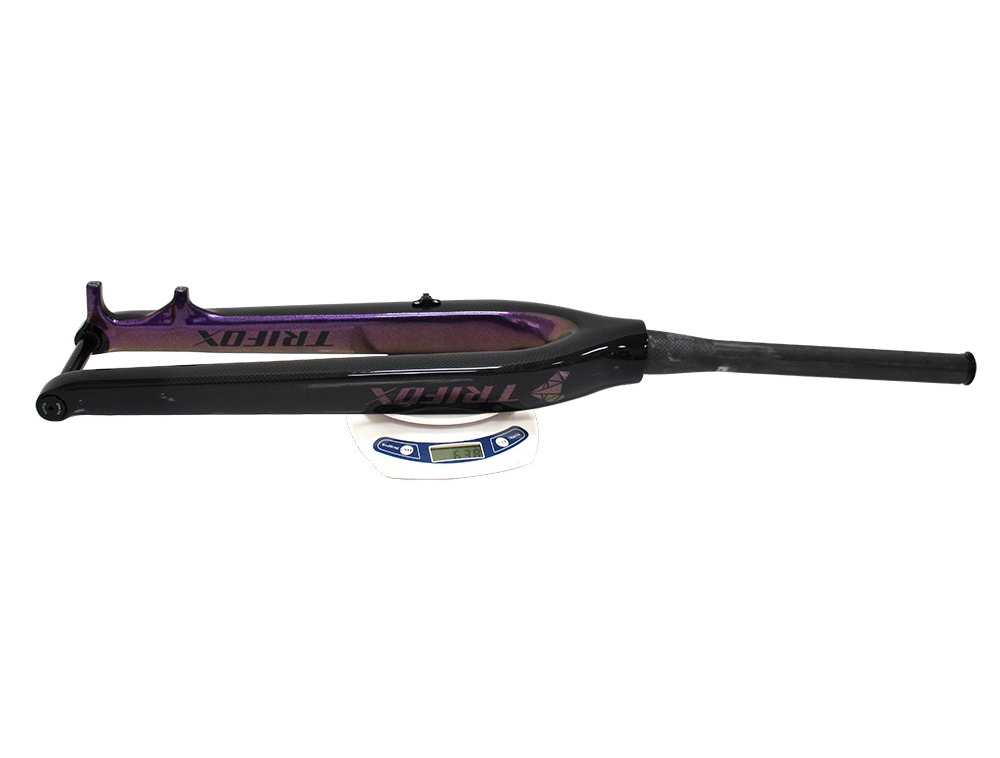
In conclusion, the 29er Rigid Carbon Fork, particularly the Trifox TMK100 model, offers a compelling upgrade for mountain bikers seeking to enhance their performance and enjoyment on the trails. Its lightweight yet durable construction, paired with its compatibility with disc brakes and 29-inch wheels, makes it a versatile and reliable choice.
The positive customer feedback further underscores its value, suggesting that for those ready to venture off the beaten path, the TMK100 could indeed be the ultimate upgrade for your mountain biking adventures. Whether you're a seasoned pro or an enthusiastic beginner, this fork promises to take your ride to new heights.
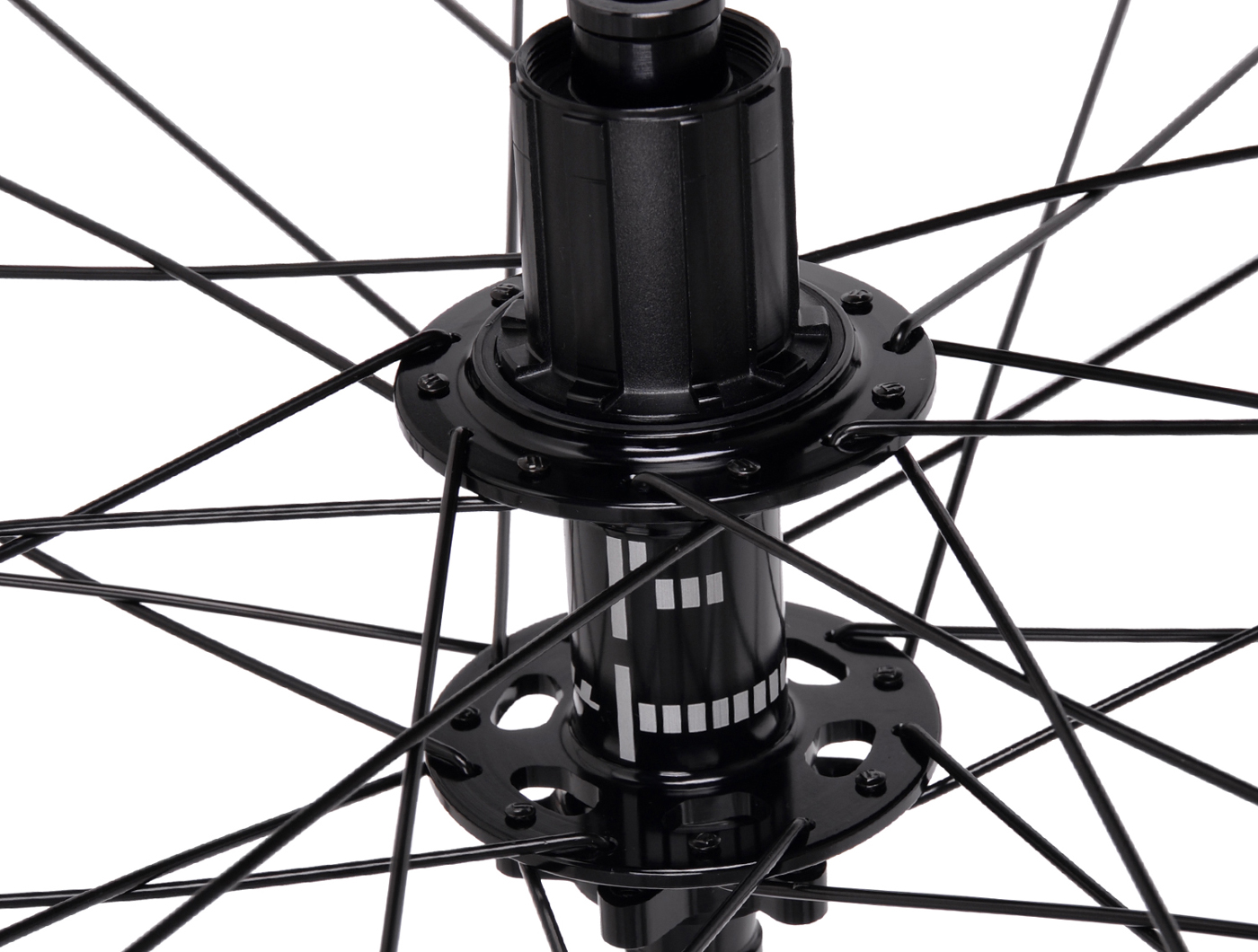
Choosing the right alloy 700c bicycle wheels can make a substantial difference in your cycling performance and experience. Whether you're a daily commuter, a weekend warrior, or a competitive cyclist, selecting the right wheels involves considering several key factors, including weight, durability, and cost.
Choosing Alloy 700c Bicycle Wheels
1. Consider Your Cycling Needs
- Commuting: If you're using your bike primarily for commuting, consider wheels that are durable and can withstand rougher terrains. Alloy wheels are a great choice as they offer a balance between strength and weight, making them ideal for everyday use.
- Racing: For competitive cycling, weight becomes a critical factor. Lighter wheels contribute to faster acceleration and improved climbing ability. Alloy wheels like the AWT7 from Trifox, which offer a blend of lightness and performance at a reduced cost, could be an ideal option.
- Touring: For long-distance touring, durability and comfort take precedence. Look for wheels that offer a comfortable ride and can endure long periods of cycling without wear. Alloy wheels with a robust build and good shock absorption properties will serve you well.
2. Evaluate Weight and Durability
- Weight: Alloy wheels are generally lighter than their steel counterparts but heavier than carbon wheels. However, they provide an excellent middle ground, offering the advantages of lightweight construction while maintaining a lower price point compared to carbon wheels.
- Durability: Alloy is known for its resilience. When choosing wheels, ensure they can handle the types of roads and conditions you usually encounter. Products like Trifox's Alloy Road Bike Wheels AWT18 are designed to offer a good balance between weight and durability, making them a reliable choice for various cycling activities.
3. Assess Cost and Value
- Budget: Alloy wheels are available at various price points, making them accessible for different budgets. Trifox offers competitive pricing on their wheels, with significant discounts and free shipping for orders over $50, enhancing value without compromising quality.
- Value: Look for wheels that provide excellent value through features like enhanced aerodynamics, quality materials, and good customer service. Trifox, for example, offers 24/7 live chat support, ensuring that you have assistance whenever needed.
Maintaining Your Alloy 700c Bicycle Wheels
Proper maintenance is crucial to ensure the longevity and performance of your alloy wheels. Here are some essential tips:
1. Regular Cleaning
- Clean your wheels regularly to remove dirt, grime, and brake dust that can wear down the rims. Use mild soap and water, and avoid harsh chemicals that can damage the alloy.
2. Inspect for Damage
- Regularly inspect your wheels for signs of damage such as cracks or dents, which can compromise safety. Pay special attention to the rims and spokes, especially after long rides or rough terrain.
3. Check Spoke Tension
- Ensure that the spokes are evenly tensioned to maintain wheel integrity. Uneven tension can lead to wheel wobble and reduce performance. If you're unsure, consulting a professional for spoke adjustments can be beneficial.
4. Monitor Tire Pressure
- Keeping your tires at the recommended pressure reduces stress on the wheels and enhances performance. Under-inflation can lead to pinch flats, while over-inflation can cause the tire to blow off the rim.
5. Store Properly
- When not in use, store your bike in a dry place away from extreme temperature changes, which can affect the integrity of alloy materials.

By carefully choosing and diligently maintaining your alloy 700c bicycle wheels, you'll enjoy a smoother, more efficient ride. Brands like Trifox offer quality options that cater to different needs, ensuring you find the perfect fit for your cycling adventures. With the right approach, your wheels can provide reliable performance for many miles to come.
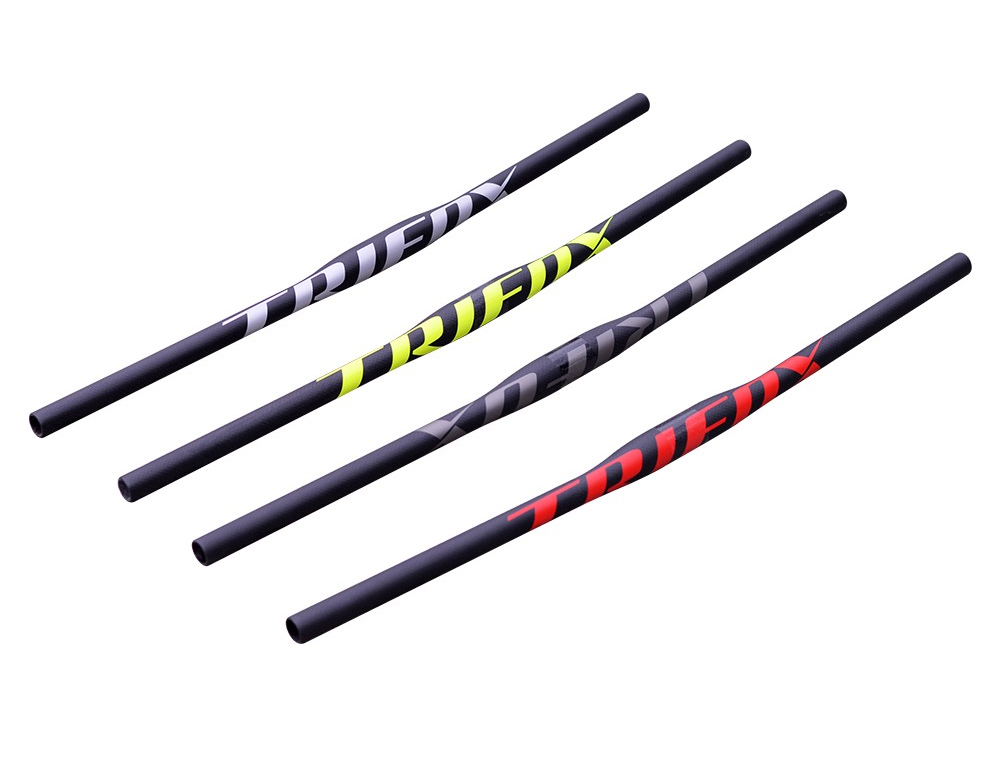
Flat handlebars have become a popular choice among cyclists, especially those navigating the rugged terrains of mountain biking. Known for their straightforward design and functional advantages, flat handlebars like the Trifox Carbon Flat Bar FHB100 can significantly enhance your biking experience.
Introduction to Flat Handlebars
Flat handlebars are characterized by their straight shape, providing a wide grip that promotes stability and control. This design is particularly advantageous for mountain bikers who require precise steering on challenging trails. Unlike drop handlebars, flat bars offer a more upright riding position, which can help reduce fatigue during long rides and improve visibility, making them ideal for both novice and seasoned riders.
Benefits of Flat Handlebars
1. Improved Control: The wide grip of flat handlebars enhances leverage and control, allowing riders to maneuver their bikes with greater ease. This is crucial when navigating steep descents or tight corners, where precise steering is necessary.
2. Comfort: By promoting an upright posture, flat handlebars help distribute weight evenly across the body, reducing strain on the back and wrists. The Trifox Carbon Flat Bar FHB100, with its ergonomic design, further alleviates discomfort by dampening vibrations, a common issue on uneven terrains.
3. Weight Reduction: Materials like carbon fiber, used in the Trifox FHB100, provide strength without the added weight. This makes climbing hills less strenuous and enhances overall bike handling. The lightweight nature of carbon fiber handlebars also contributes to improved acceleration and agility.
Choosing the Right Flat Handlebars
Selecting the right flat handlebars involves considering several factors:
- Material: Carbon fiber is a top choice due to its lightweight and durable properties. The Trifox Carbon Flat Bar FHB100, crafted from T700 carbon fiber with a 3K weave, offers a perfect blend of strength and performance.
- Back Sweep and Width: A slight back sweep, like the 3-degree angle found in the Trifox FHB100, can enhance comfort by aligning the wrists naturally. The width of the handlebar should match the rider’s shoulder width, ensuring optimal control and comfort.
- Compatibility: Ensure that the handlebars are compatible with your bike’s stem size. The Trifox Carbon Flat Bar FHB100, for instance, is designed to fit a 31.8mm stem, making it versatile for various bike models.

Flat handlebars are an excellent choice for cyclists seeking improved control, comfort, and reduced bike weight. By considering factors such as material, back sweep, and compatibility, riders can find handlebars that enhance their performance and riding enjoyment.
The Trifox Carbon Flat Bar FHB100 exemplifies these benefits, offering a reliable option for those looking to upgrade their biking experience. Whether you're tackling mountain trails or enjoying a city commute, flat handlebars can significantly amplify your cycling adventures, making them a worthwhile investment for any cyclist's toolkit.
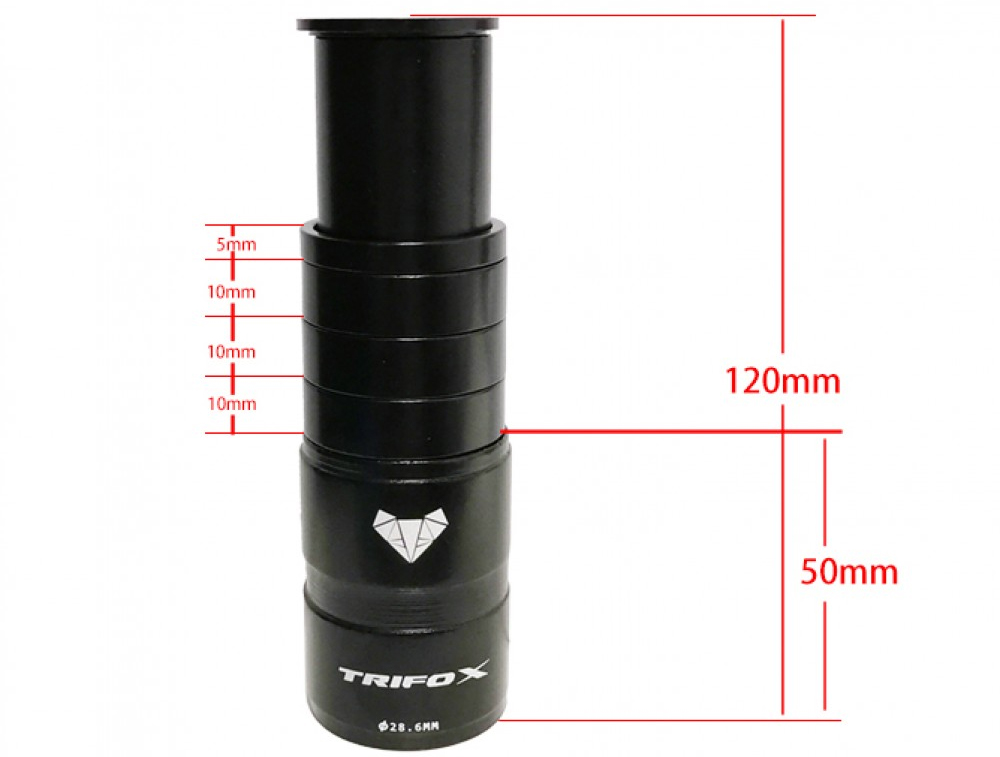
In the era of digital cycling, integrating technology into your biking routine can significantly enhance your riding experience. Whether you're a cycling enthusiast or a professional athlete, using a bike monitor stand can transform your rides by providing easy access to performance tracking and navigation tools. An adjustable bike monitor stand allows you to securely mount your digital device to your bike, ensuring you have real-time data at your fingertips while keeping your focus on the road.
Understanding the Importance of Bike Monitor Stands
Bike monitor stands are essential for cyclists who rely on digital devices such as GPS units, smartphones, or cycling computers to track performance metrics, navigate routes, and stay connected. These stands provide a secure and accessible platform for your devices, enhancing safety and efficiency by allowing you to keep your hands on the handlebars and your eyes on the path ahead.
Step-by-Step Guide to Setting Up an Adjustable Bike Monitor Stand
1. Choosing the Right Stand: Select a bike monitor stand that is compatible with your device and bike model. Consider factors such as the size and weight capacity of the stand, its adjustability, and whether it offers weather protection features. Look for stands that are robust and easy to install without requiring special tools.
2. Attaching the Stand to Your Bike: Follow the manufacturer's instructions to securely attach the stand to your bike's handlebars or stem. Ensure that the stand is fastened tightly to avoid any movement during rides. Most stands use a clamp or screw mechanism that can be tightened with basic tools.
3. Adjusting for Optimal Viewing: Position your device on the stand, adjusting the angle and height to suit your riding posture. The screen should be easily visible without requiring you to tilt your head significantly, maintaining comfort and safety. Ensure the stand holds the device securely, even on rough terrains.
Maximizing the Benefits of an Adjustable Bike Monitor Stand
- Ensure Stability: Regularly check the stand's attachment points to ensure they remain tight and secure. This practice prevents the stand from loosening over time, which can lead to device damage or distraction during rides.
- Protect Your Device from Weather: Consider using a weather-resistant cover for your device or choose a stand that offers protective features. This precaution helps safeguard your electronics from rain, dust, and debris, extending their lifespan.
- Use the Monitor Effectively: Familiarize yourself with the device’s interface and features before heading out. Set up regular updates on your performance metrics or navigation routes to make the most of your rides. Customize your display to show only essential information to minimize distractions.

Conclusion
Investing in a quality adjustable bike monitor stand is a smart choice for cyclists aiming to enhance their riding experience. By securely mounting and effectively utilizing digital devices, you can enjoy improved navigation and performance tracking, leading to more informed and enjoyable rides.
Embrace the technology-driven cycling era by equipping your bike with a reliable monitor stand, ensuring you stay connected and focused on your journey. Take the first step towards a more efficient and enjoyable biking routine today.
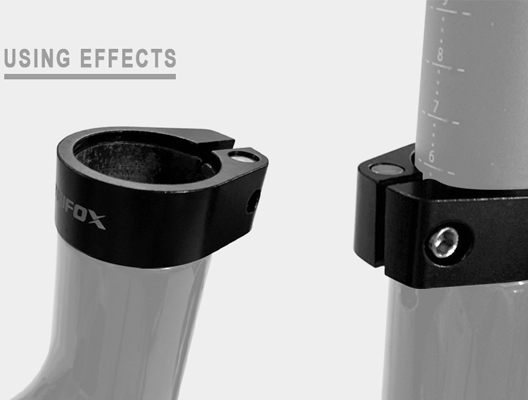
In the world of cycling, the seatpost clamp might seem like a minor component, but its role in ensuring ride comfort and stability is significant. Typically, the seatpost clamp secures the seatpost in place, maintaining the desired height and angle for optimal rider comfort. But what if you find yourself without this essential part? Here’s how to manage and ensure a smooth ride without a traditional seatpost clamp.
Importance of Seatpost Clamps
The seatpost clamp, such as the SC35 model from Trifox Bike, is designed to securely hold the seatpost in position. By doing so, it prevents the seatpost from slipping or rotating during rides, which can affect your posture and pedaling efficiency. Made from durable materials like aluminum, these clamps are built to withstand the stress and vibrations of cycling, providing long-term reliability.
Managing Without a Seatpost Clamp
While a seatpost clamp is crucial for stability, there are situations where you might need to ride without one. Whether due to a missing piece or a temporary adjustment, here are some alternative solutions:
1. Friction Paste: If you're in a pinch, applying a friction paste to the seatpost can increase grip and reduce slippage. This paste enhances the friction between the seatpost and the frame, offering temporary stability.
2. Shim Solutions: Using a shim made from sturdy material like metal or rubber can help secure the seatpost. By wrapping the shim around the seatpost, you can create a tighter fit between the post and the frame.
3. Tightening Mechanisms: If your bike frame allows, consider using a threaded bolt mechanism to secure the seatpost. This involves drilling a hole through the frame and post and inserting a bolt secured with a nut. While more permanent, this can effectively hold the seatpost in place.
Alternative Solutions
If the absence of a clamp is a longer-term issue, investing in alternative securing solutions is advisable:
- Quick-Release Mechanisms: Some bikes come with built-in quick-release mechanisms that don't rely on traditional clamps. These can be adjusted with a lever and offer easy height adjustments.
- Integrated Clamping Systems: Certain frames feature integrated clamping systems that eliminate the need for an external clamp. These systems use a tightening bolt that is part of the frame, ensuring a sleek and secure hold.
Tips for Maintaining Seatpost Stability
Without a clamp, maintaining seatpost stability requires regular checks and adjustments:
1. Regular Inspections: Periodically inspect the seatpost and frame for signs of wear or slippage. Ensure any temporary solutions, like shims or friction paste, are holding up under stress.
2. Consistent Positioning: Mark the ideal seatpost height with tape or a marker. This visual guide helps ensure you maintain the correct position, even after adjustments.
3. Secure Tools: Keep essential tools handy for on-the-go adjustments. Allen keys or wrenches can tighten bolts or adjust quick-release systems when needed.

Ensuring Rider Comfort and Safety
Ultimately, rider comfort and safety should be the priority when managing a bike without a clamp. Ensuring the seatpost is secure and at the correct height prevents discomfort and potential accidents. Always test adjustments in a safe environment before tackling challenging trails or long rides.
By understanding the role of a seatpost clamp and exploring alternative solutions, you can ensure a stable and comfortable ride, even in the absence of this small but vital component. Whether using temporary fixes or investing in integrated systems, maintaining seatpost security is essential for an enjoyable cycling experience.

Optimizing your ride with an ultra light road bike like the Trifox Ultra Light SF-QR 2.0 involves leveraging its standout features for peak performance.
This bike, crafted from T800 carbon fiber, offers a remarkable strength-to-weight ratio, weighing just 8.6kg. Its lightweight nature enhances speed and agility, making climbs easier and long rides less fatiguing. The carbon fiber construction also improves vibration dampening, offering a smoother ride on varied terrain.
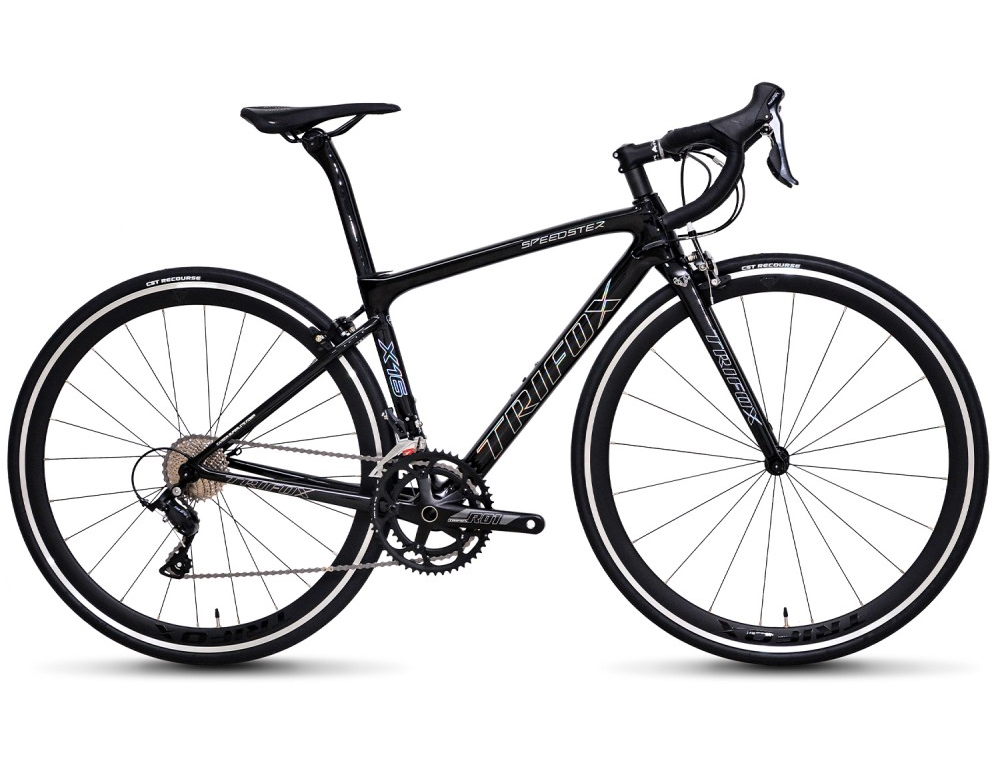
Equipped with the Shimano Sora R3000 groupset, the Ultra Light SF-QR 2.0 ensures smooth and precise shifting across its 2x9 speed setup. This efficient drivetrain allows riders to seamlessly adjust to changing inclines and conditions, maintaining optimal momentum throughout their journey.
Aerodynamic design is another key aspect, with partially internal cable routing that minimizes wind resistance and protects cables from wear. This design not only enhances speed but also contributes to the bike's sleek, clean look.
For optimal performance, regular maintenance is crucial. Check and adjust tire pressure for different road conditions, and ensure the drivetrain is clean and well-lubricated to prevent wear and maintain efficiency. Adjust the saddle and handlebar height for comfort and improved control.
Selecting the right size is vital for comfort and efficiency. The SF-QR 2.0 offers sizes from 44cm to 58cm, catering to riders from 150cm to 191cm tall. Proper sizing ensures better posture, reducing strain and enhancing power transfer.
Using an ultra light road bike like the Trifox Ultra Light SF-QR 2.0 can significantly enhance speed and efficiency, allowing you to enjoy a superior riding experience. By focusing on its features and maintaining optimal settings, you can unlock the full potential of your road biking adventures.
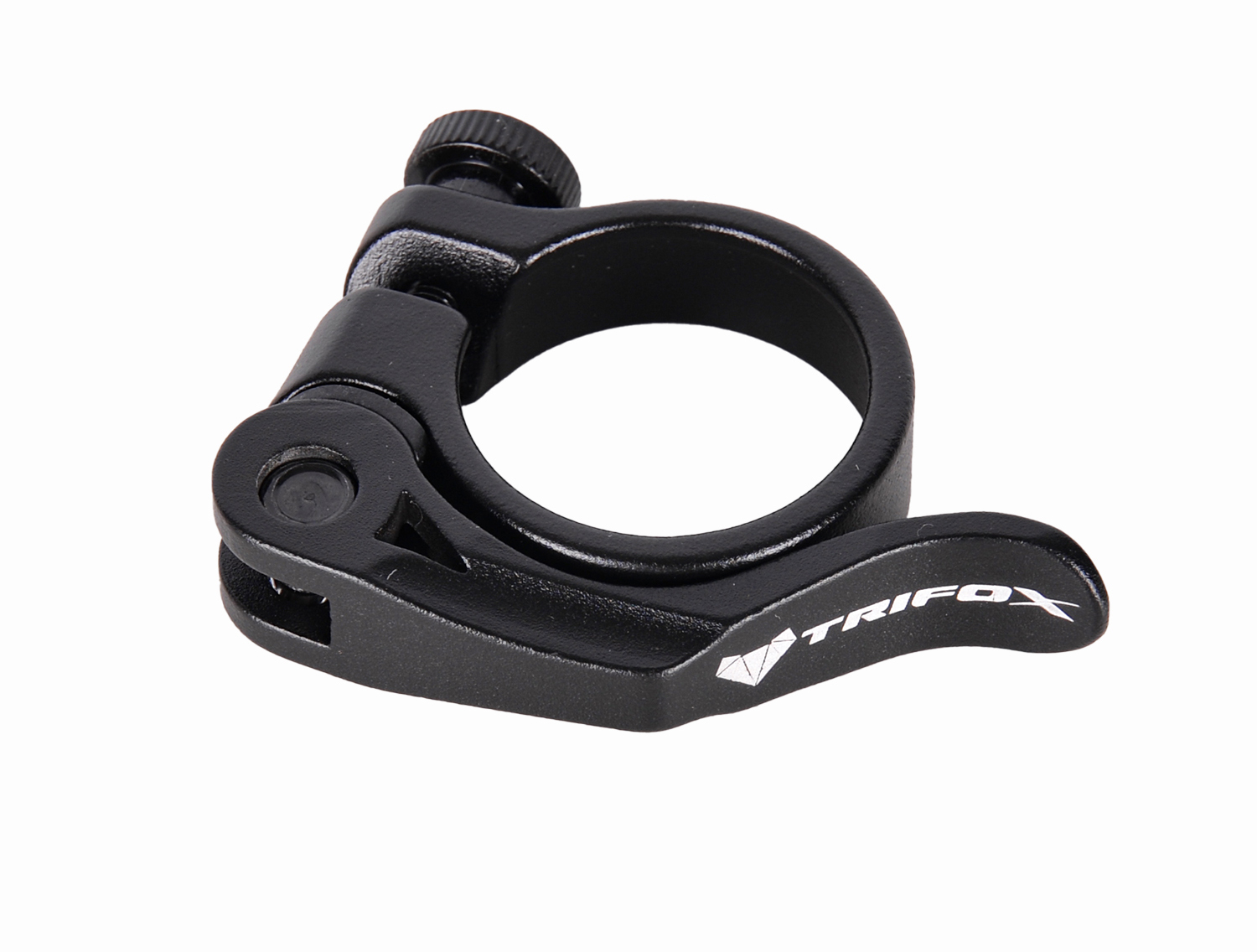
For avid cyclists, comfort and performance are paramount, and one often overlooked component that plays a crucial role in achieving these is the road bike seat clamp.
While small in size, the seat clamp is vital for maintaining stability and precision during your rides, directly impacting your overall cycling experience.
A seat clamp like the SC35 model is designed to securely hold the seatpost in place, ensuring it remains at the desired height and angle. This prevents any unwanted slippage or rotation, which can cause discomfort and disrupt your ride. Maintaining the correct seating position is essential for both comfort and efficiency, allowing you to focus on the road ahead.
The SC35 seat clamp is crafted from high-quality aluminum, a material known for its strength and durability. This makes the clamp robust enough to withstand the rigors of cycling, including the constant vibrations and pressures experienced during rides.
Despite its strength, the aluminum construction ensures the clamp remains lightweight, a crucial factor for those looking to optimize their bike's performance without adding unnecessary weight.
One of the standout features of the SC35 is its user-friendly design. It is engineered for easy installation, equipped with a locking threaded nut that allows for quick adjustments. This ensures that cyclists can make precise modifications to their seating arrangement with minimal hassle, enhancing comfort and reducing the risk of discomfort during long rides.
By choosing the right seat clamp, cyclists can significantly enhance their riding experience. A stable and correctly positioned seatpost not only improves comfort but also contributes to better performance by allowing more efficient power transfer from the rider to the bike.
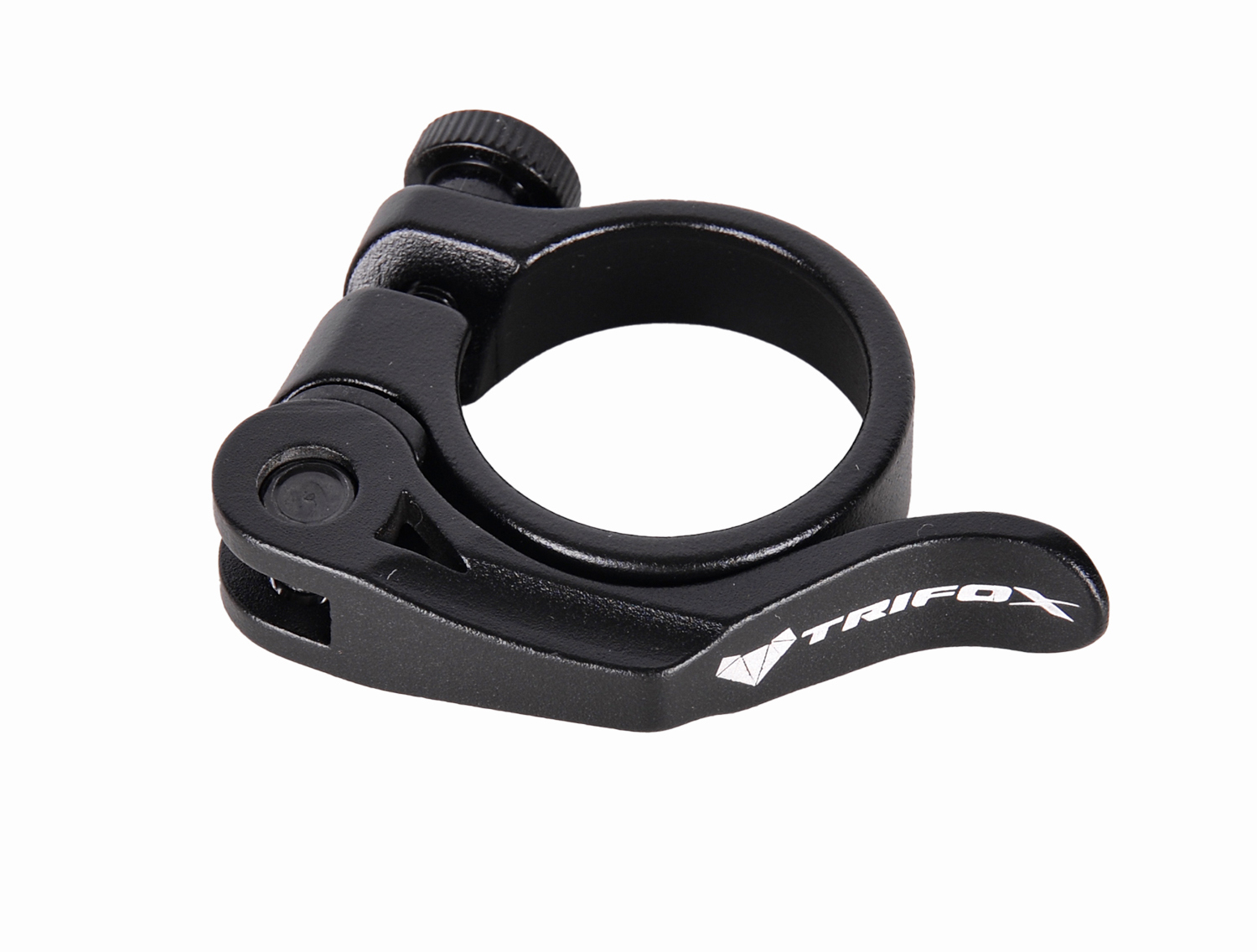
In conclusion, investing in a quality seat clamp like the SC35 can transform your cycling experience. Whether you're a seasoned cyclist or a weekend rider, ensuring your bike is equipped with a reliable seat clamp is essential. Consider upgrading your current setup to enjoy improved comfort and performance on every ride.
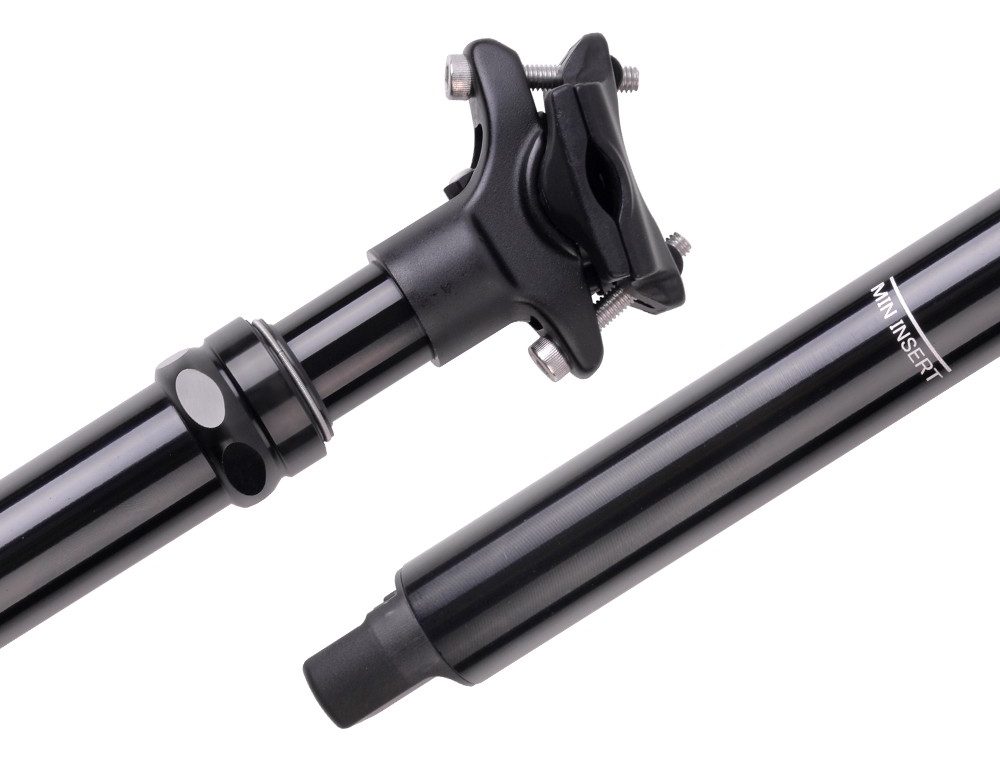
In the quest for optimal cycling performance, every component of a bike plays a crucial role. One often overlooked component that can significantly impact your ride is the seatpost.
The choice between aluminum and carbon seatposts can make a marked difference, and a carbon seatpost with a 31.6mm diameter might just be the key to unlocking your bike's performance potential.
A carbon seatpost is prized for its ability to reduce weight. When every gram counts, particularly in competitive biking or long-distance rides, a lighter bike can make a substantial difference in speed and endurance. Carbon fiber is renowned for its strength-to-weight ratio, meaning you get exceptional durability without the added bulk. This can enhance acceleration and climbing efficiency, offering a noticeable advantage for serious cyclists.
Beyond weight reduction, a carbon seatpost offers superior vibration dampening compared to traditional aluminum. This is crucial for comfort, particularly on rough terrains or extended rides where constant vibrations can lead to fatigue. By absorbing road shocks and vibrations, a carbon seatpost ensures a smoother, more comfortable ride, allowing you to maintain higher speeds with less discomfort over time.
The 31.6mm diameter is a popular choice in the cycling community due to its balance of strength and flexibility. This size is versatile, fitting a wide range of bike frames while offering robust support for the rider. It’s not just about fitting, though—the diameter also contributes to the seatpost’s ability to flex appropriately, enhancing comfort and control without compromising stability.
A prime example of innovative seatpost technology is the Trifox AP316 Dropper Seatpost. While it is constructed from high-quality 7075 aluminum rather than carbon, it incorporates features that parallel the benefits of a carbon seatpost. The AP316 offers a 125mm travel range, which is adjustable via a remote, allowing for real-time customization of your ride height. This adaptability is vital for maintaining an optimal riding position across varying terrain, improving both comfort and performance.
The AP316’s design includes an air suspension system, which further enhances ride comfort by minimizing the impact of bumps and jolts. This not only protects your joints but also allows for a more controlled and enjoyable ride. Its robust aluminum construction ensures durability, while its lightweight nature keeps your bike agile.
Investing in a seatpost like the AP316, or a carbon equivalent, can significantly enhance your cycling experience. The ability to adjust your seat height on-the-fly means you can swiftly adapt to changing terrains, maintaining power and efficiency. Coupled with the comfort of reduced vibrations and weight, these attributes contribute to better endurance and less fatigue, allowing you to focus on the ride itself rather than the discomforts often associated with long or challenging routes.
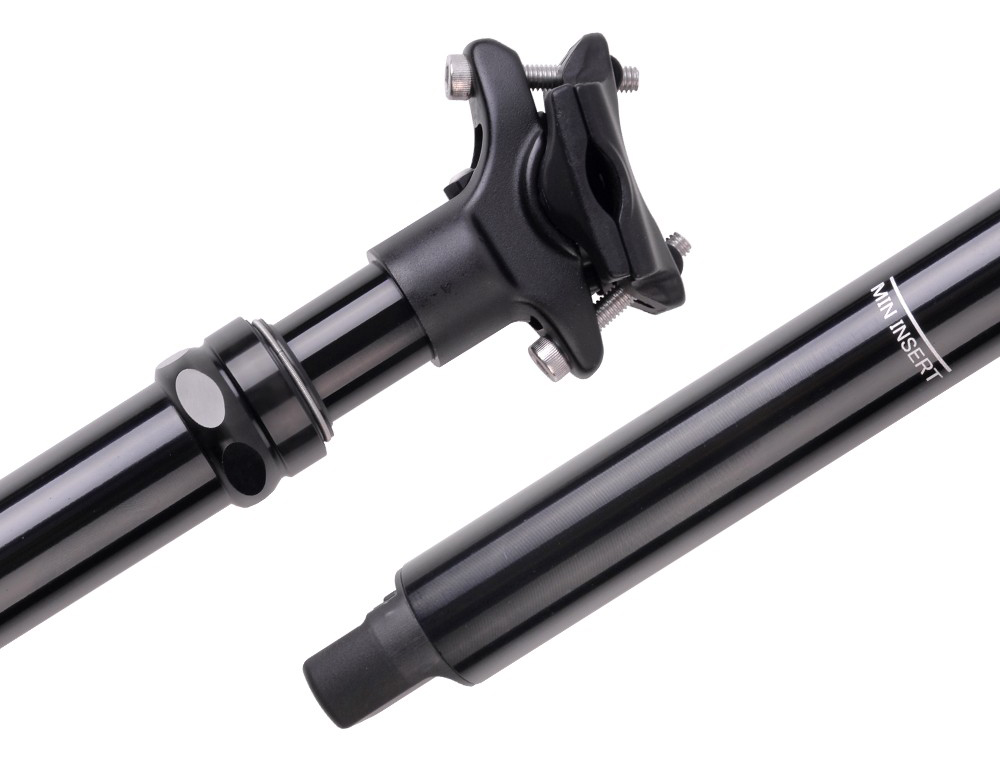
In conclusion, a carbon seatpost with a 31.6mm diameter offers compelling advantages for cyclists aiming to improve their performance. From weight savings and vibration dampening to enhanced ride comfort, the benefits are clear.
Whether choosing a carbon model or a high-quality alternative like the Trifox AP316, upgrading your seatpost is a strategic investment in your biking prowess. For those serious about stepping up their cycling game, considering this upgrade is a practical step toward achieving your performance goals.

























































